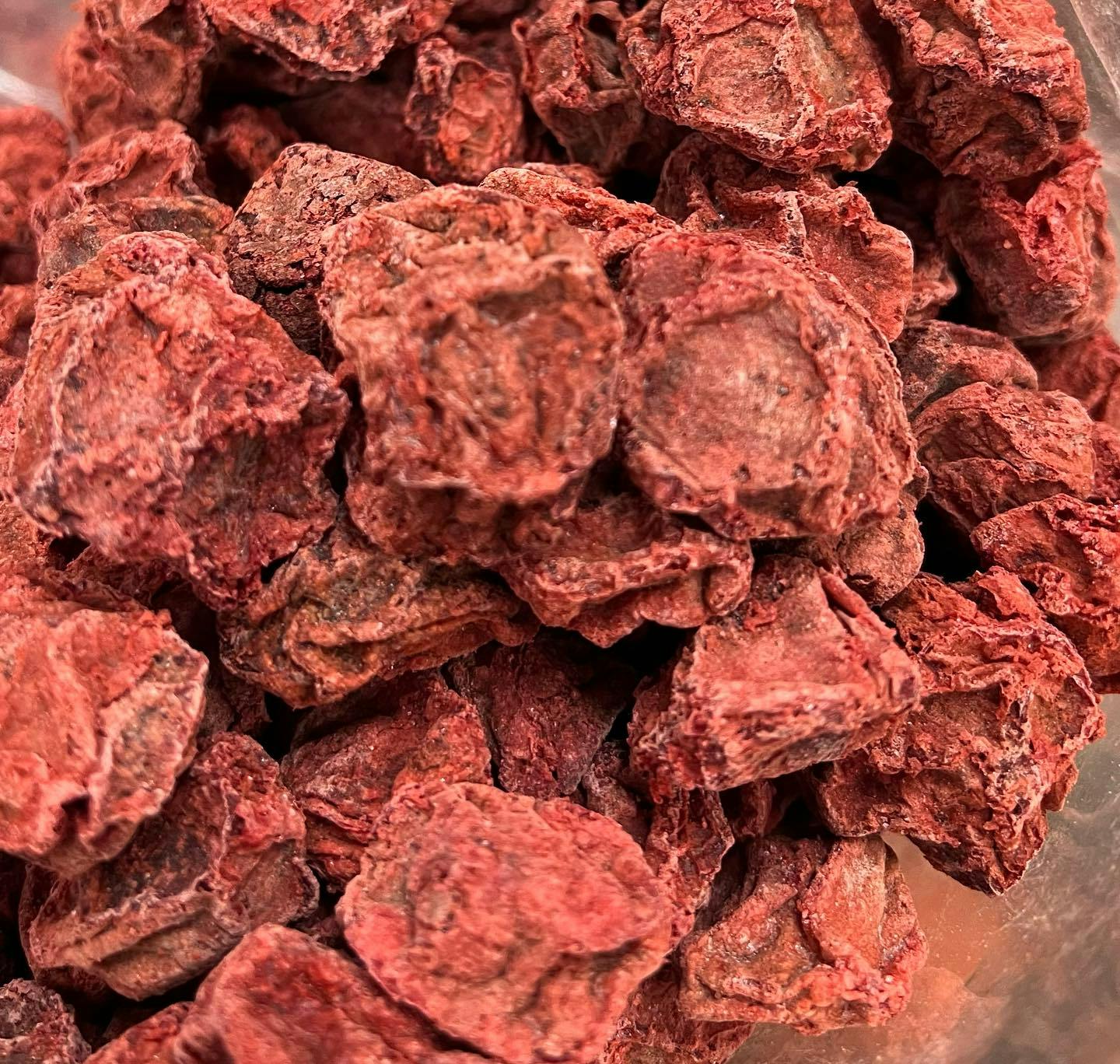You’ve got a lot of great food to try in Hawaii. There’s kalua pig roasted in an underground imu oven, and poi pounded from taro roots. You’ll likely get authentic Hawaii poke while you’re here, along with local fruits and juices. One must-try Hawaii snack is li hing mui (lee-HEE-moo-EE). It’s a culmination of the best tastes: Sweet, Sour, and Salty.
What is Li Hing Mui?
Li hing mui loosely translates to “traveling plum” in Chinese. During the 1880s to the early 1920s, Chinese immigrants came to Hawaii to work in the plantations. They brought along plum, which they dried until it got a unique tart and bitter flavor. Soon, the it evolved into the modern-day taste we know today.
It takes the form of powder or crack seeds, which is a variety of dehydrated and preserved fruits. The powder itself is added to all types of snacks, from dried mango to cuddle fish.
First-timers who try li hing mui would cringe at the taste of it. It’s not a bad flavor, but the initial bite shocks your tastebuds. It’s an acquired taste, much like the blandness of poi or the sweetness of squid luau.
How to Eat Li Hing Mui
A favorite among locals, li hing mui is added to a variety of other foods to enhance their flavor. Fruits and li hing are a match made in paradise. I personally love to put the crack seeds in the middle of a cut orange. You can also add it to apples or pineapples to make a tangy sweet-and-savory snack.
Local candy comes ready-made with li hing mui powder on it. Check out local grocery stores to try gummy bears, dried fruit, and other bagged sweets flavored with this unique topping.
Another way to utilize its unique taste is to add it to your favorite drinks. Li hing mui within a Passion Orange Guava margarita mix and ice makes for a refreshing beverage. For a non-alcoholic way to quench your thirst, try adding it to your shave ice.
Its signature mark is the reddish-orange stain that it leaves on your fingers, teeth, and tongue. It can also serve as a dye– how about a red-hued tie-dye shirt made with this tasty powder?
Crack seed can also be enjoyed plain as a snack. Many local workers will eat it to replenish their sodium levels after sweating under Hawaii’s sun all day.
Where to Find It
You can find Li Hing Mui at most grocery and convenience stores throughout Hawaii. It costs around $5 for a small bag of crack seed or powder. But it’s hard to find on the mainland. Certain niche markets may have it in stock, though.
The biggest distributor of this treat is “Enjoy,” based in Taiwan. “Asia Trans” is Hawaii’s local distributor, located in Kona on the Big Island.
All in all, li hing mui is a flavorful experience that is a must if you want to try out a more interesting tropical taste.




